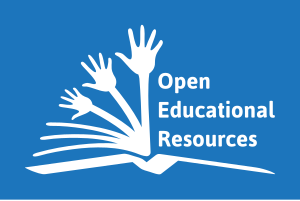When we received the assignment to explore Open Educational Resources, I had no idea what they were. But after reading the first sentence in the article provided for us, I learned that Open Educational Resources (OER) are any resources available at little or no cost that can be used for teaching, learning, or research. I also learned that they are typically electronic resources. I feel that makes it very convenient to find them. The article also makes a point in saying that since the website is growing with more and more material, it is essential to weed out the bad stuff and keep the good, so the site is trying to do so by 'approving' articles that are worth reading. We were also provided a link to the website where many OER are found. I had the chance to explore, and I can say that I thoroughly enjoyed browsing through the various things on the website.
One of the first things I did was type "math" into the search bar. I ended up finding a lesson idea called 'Candy Math' for a K-1 lesson. I believe OER could be a great tool to help plan lessons in the future and to pull ideas from. Most important of all, they're either free or pretty cheap, which is definitely a HUGE plus since I am just an educator in training. I also noticed you can 'save' ideas that you like to a profile or also 'like' and share them to Facebook. I feel that is a cool tool as well. Another cool thing I found on the OER website was an interactive game called Antibiotics Attack, which teaches about their functions and what they target. I also found a Basic Speller Textbook which can be used for multiple grade levels. The interactive activity could come in handy in the future to help provide extra exploration of a topic. As my professor pointed out in a video he made for our class to present the idea to us, using OER could cut down on textbook costs. If students were given the link for a book such as the Basic Speller book I have linked above, they wouldn't need to buy it. Also, using OER could help saving wasting paper. It could also help students not have to carry such heavy backpacks loaded with textbooks. Another thing I found on the website is that there are some groups established for either certain school districts, state groups, or even one for math common core standards. Within these groups, people can share resources that they have found. This is a great way to network with other teachers and to also share valuable resources that have great value to them.
The OER Commons website is not the only place to obtain OER. I found some here on this PBS learning site. Another place I found resources was from somewhere I never would have thought of; the Verizon Foundation! Check their page out called Thinkfinity! A final place I found more OER at is from the Classroom Aid website.
With all of these great resources out there, the only thing you will need to spend is the time to find them!



